Advertisement
Popular Now
Dark Souls III, an opus of despair and challenge, stands as a testament to the intricacies of madness and the human psyche. As players traverse the desolate landscapes of Lothric, they are confronted with a pervasive theme: the slow descent into insanity. This article explores how insanity is depicted through character arcs, environmental storytelling, and the overarching narrative, revealing the multifaceted nature of this theme.
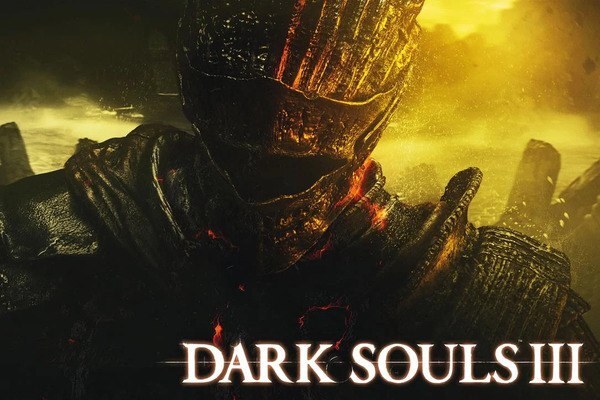 The concept of madness is introduced early in Dark Souls III, establishing a dark atmosphere that permeates the entire game. From the moment players enter Lothric, it is clear that the world is on the brink of collapse, a reflection of the inner turmoil of its inhabitants.
The concept of madness is introduced early in Dark Souls III, establishing a dark atmosphere that permeates the entire game. From the moment players enter Lothric, it is clear that the world is on the brink of collapse, a reflection of the inner turmoil of its inhabitants.
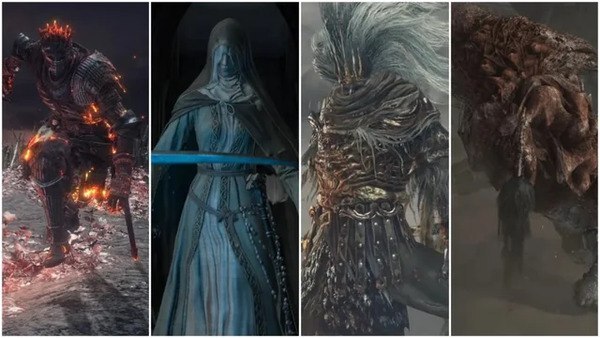 Characters in Dark Souls III serve as embodiments of madness, each grappling with their psychological burdens. Their stories illuminate the various ways insanity manifests in the world, offering players a nuanced understanding of the theme.
Characters in Dark Souls III serve as embodiments of madness, each grappling with their psychological burdens. Their stories illuminate the various ways insanity manifests in the world, offering players a nuanced understanding of the theme.
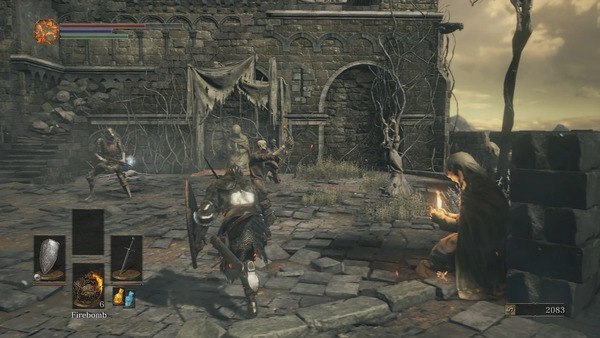 The environments in Dark Souls III are not merely backdrops; they are reflections of the madness that afflicts the inhabitants of Lothric. Each area tells a story, revealing the psychological state of the world.
The environments in Dark Souls III are not merely backdrops; they are reflections of the madness that afflicts the inhabitants of Lothric. Each area tells a story, revealing the psychological state of the world.
 Here, players confront the potential for madness within themselves, as they face the fallen champions of Lothric. Each battle is not just a test of skill but a psychological struggle against the encroaching darkness, reinforcing the idea that madness is an ever-present threat in the game.
Here, players confront the potential for madness within themselves, as they face the fallen champions of Lothric. Each battle is not just a test of skill but a psychological struggle against the encroaching darkness, reinforcing the idea that madness is an ever-present threat in the game.
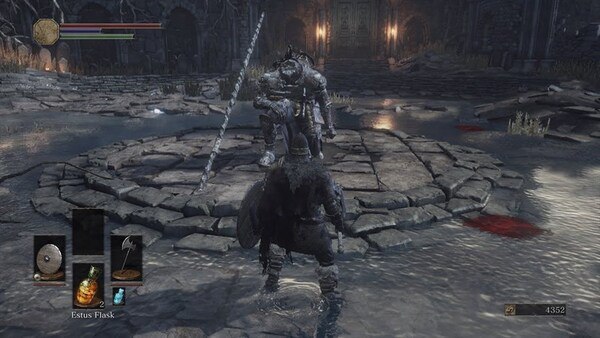 Conversely, the flame's dwindling state invites the darkness to seep in. Characters like the Nameless King symbolize the rebellion against this cycle, choosing to embrace the dark over the madness of the flame. This choice highlights the psychological struggle inherent in the game, as players grapple with the decision to reignite the flame or allow it to fade into oblivion.
Conversely, the flame's dwindling state invites the darkness to seep in. Characters like the Nameless King symbolize the rebellion against this cycle, choosing to embrace the dark over the madness of the flame. This choice highlights the psychological struggle inherent in the game, as players grapple with the decision to reignite the flame or allow it to fade into oblivion.
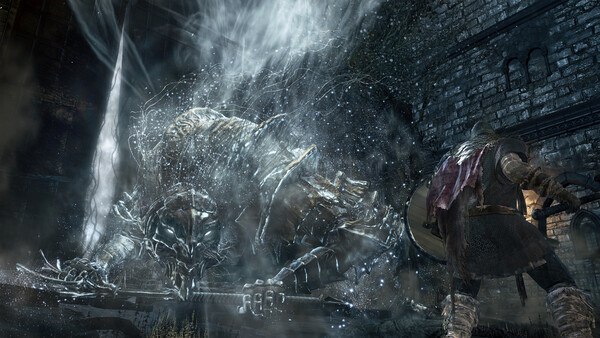 Non-playable characters (NPCs) in Dark Souls III serve as vessels for exploring the theme of madness. Their interactions and quests reveal the personal toll of insanity on individuals and communities.
Non-playable characters (NPCs) in Dark Souls III serve as vessels for exploring the theme of madness. Their interactions and quests reveal the personal toll of insanity on individuals and communities.
The Introduction of Madness
 The concept of madness is introduced early in Dark Souls III, establishing a dark atmosphere that permeates the entire game. From the moment players enter Lothric, it is clear that the world is on the brink of collapse, a reflection of the inner turmoil of its inhabitants.
The concept of madness is introduced early in Dark Souls III, establishing a dark atmosphere that permeates the entire game. From the moment players enter Lothric, it is clear that the world is on the brink of collapse, a reflection of the inner turmoil of its inhabitants.
A World in Decay
Lothric is a land ravaged by the consequences of ambition and power. The once-great kingdoms are reduced to ruins, their inhabitants succumbing to despair. This decay is not just physical; it symbolizes a collective mental breakdown, as characters and environments alike reflect the insanity that pervades their lives.Foreshadowing Madness
The game’s opening scene, where players witness the forlorn Fire Keeper, sets the tone for the exploration of madness. Her gaze is distant, suggesting a deep-seated trauma linked to the flame and its cyclical nature. This initial encounter foreshadows the broader theme of insanity that will be encountered throughout the journey.The Characters: Harbingers of Insanity
 Characters in Dark Souls III serve as embodiments of madness, each grappling with their psychological burdens. Their stories illuminate the various ways insanity manifests in the world, offering players a nuanced understanding of the theme.
Characters in Dark Souls III serve as embodiments of madness, each grappling with their psychological burdens. Their stories illuminate the various ways insanity manifests in the world, offering players a nuanced understanding of the theme.
The Abyss Watchers
The Abyss Watchers, once noble guardians, are now remnants of their former selves. Their lore reveals that they were driven mad by their relentless fight against the Abyss, leading to a tragic cycle of self-destruction.The Cycle of Madness
Their struggle highlights how ambition can lead to insanity, as they are forever locked in battle against themselves. This internal conflict represents a powerful metaphor for the consequences of unchecked desire, showing how the pursuit of glory can warp the mind.Irina of Carim: A Tale of Corruption
Irina's journey encapsulates the fragility of sanity. Initially introduced as a character seeking redemption, her story takes a dark turn when she is corrupted by the influence of the Dark.The Temptation of Power
Irina’s descent into madness is sparked by her desire for knowledge and power. The temptation to embrace the darkness ultimately consumes her, illustrating how even the noblest intentions can lead to insanity. Her transformation serves as a cautionary tale about the seductive nature of power and its ability to unravel one’s mind.The Environment: Mirrors of Madness
 The environments in Dark Souls III are not merely backdrops; they are reflections of the madness that afflicts the inhabitants of Lothric. Each area tells a story, revealing the psychological state of the world.
The environments in Dark Souls III are not merely backdrops; they are reflections of the madness that afflicts the inhabitants of Lothric. Each area tells a story, revealing the psychological state of the world.
The Cathedral of the Deep
The Cathedral of the Deep serves as a prime example of how environment and madness intertwine. Once a place of worship, it has become a sanctuary for the depraved. The grotesque architecture and disfigured enemies evoke a sense of unease, mirroring the insanity that resides within.The Deformed and the Damned
The inhabitants of the Cathedral, such as the Hollowed, embody the madness born from despair. Their twisted forms and erratic behavior reflect the psychological toll that the environment has taken on them. The area becomes a testament to how the world itself can drive individuals to the brink of insanity.The Untended Graves
In contrast, the Untended Graves present a haunting vision of what lies beneath the surface of madness. This area, shrouded in darkness, serves as a reminder of the potential for redemption amidst the chaos.The Fight Against Insanity
 Here, players confront the potential for madness within themselves, as they face the fallen champions of Lothric. Each battle is not just a test of skill but a psychological struggle against the encroaching darkness, reinforcing the idea that madness is an ever-present threat in the game.
Here, players confront the potential for madness within themselves, as they face the fallen champions of Lothric. Each battle is not just a test of skill but a psychological struggle against the encroaching darkness, reinforcing the idea that madness is an ever-present threat in the game.
The Influence of the Flame
The First Flame, central to the lore of Dark Souls III, embodies the tension between light and dark, sanity and madness. The flame represents hope but also the source of suffering, illustrating the duality of existence.The Burden of the Flame
Characters like Gwyn and his descendants are burdened by their connection to the flame. Their attempts to maintain it lead to immense psychological strain, showcasing how the desire to preserve what is left can drive individuals to madness.The Cycle of Sacrifice
This cycle is evident in the character of Yhorm the Giant, whose immense size and strength contrast sharply with his tragic fate. His ambition to protect his people ultimately leads to isolation and despair, reflecting how the flame's burdens can corrupt even the mightiest.The Dark Side of the Flame
 Conversely, the flame's dwindling state invites the darkness to seep in. Characters like the Nameless King symbolize the rebellion against this cycle, choosing to embrace the dark over the madness of the flame. This choice highlights the psychological struggle inherent in the game, as players grapple with the decision to reignite the flame or allow it to fade into oblivion.
Conversely, the flame's dwindling state invites the darkness to seep in. Characters like the Nameless King symbolize the rebellion against this cycle, choosing to embrace the dark over the madness of the flame. This choice highlights the psychological struggle inherent in the game, as players grapple with the decision to reignite the flame or allow it to fade into oblivion.
The Boss Encounters: Climax of Insanity
Boss battles in Dark Souls III are not just tests of skill but represent climactic confrontations with madness. Each boss encounter reflects the overarching theme, pushing players to confront the manifestations of insanity directly.The Dancer of the Boreal Valley
The Dancer serves as a haunting embodiment of madness, her fluid movements juxtaposed with the chaos of battle. As players engage her, they are not just fighting a physical opponent but facing the emotional and psychological turmoil she represents.The Dance of Insanity
Her dance is a chaotic expression of both beauty and terror, symbolizing the fragility of sanity. The encounter becomes a reflection of the player’s own struggle against the madness that permeates Lothric, reinforcing the theme of inner conflict.Manus, the Father of the Abyss
In the DLC, "The Ringed City," Manus exemplifies the depths of insanity. His insatiable hunger for power and knowledge leads to a catastrophic spiral into madness, reflecting the broader consequences of ambition.The Confrontation with Madness
The fight against Manus is a climactic confrontation with the very essence of madness. Players face not just a formidable foe but also the embodiment of their own desires and fears, culminating in a battle that transcends mere gameplay and delves into the psychological.The Role of NPCs in Exploring Madness
 Non-playable characters (NPCs) in Dark Souls III serve as vessels for exploring the theme of madness. Their interactions and quests reveal the personal toll of insanity on individuals and communities.
Non-playable characters (NPCs) in Dark Souls III serve as vessels for exploring the theme of madness. Their interactions and quests reveal the personal toll of insanity on individuals and communities.
















